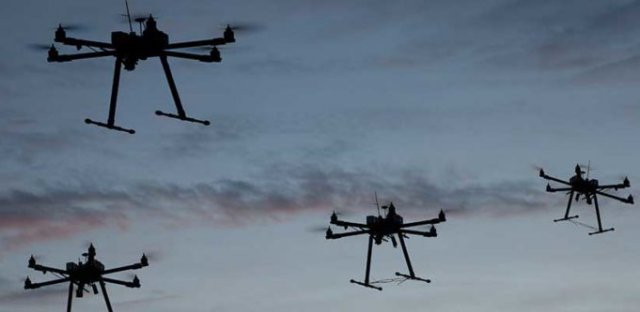Using swarm intelligence may be a way to combat many of the challenges faced by drone operators, both in business and by governments, according to a group of academics.
Researchers from British and French universities have written a paper noting how drones can now add value to these organizations due to low cost and mobilization time – for example, checking the structural integrity of a building in a much cheaper way than with helicopters or high-rise cranes. They are also cheaper and quicker than helicopters for use by police services.
However, the study argues that drones rarely work effectively as individual units in these scenarios – they are best operated as part of a ‘fleet’, often with humans involved in a centralized control environment. This means ‘fleet participants’ need to cooperate with other drones in the same fleet. Similarly, if there are members of other fleets in the same airspace, they need to be able to communicate in order to operate safely.
The paper proposes different ways of managing drones. All decisions could be taken by a control center – requiring real-time communication between drones in the air and the control center on the ground. But there may be a number of situations where drones may need to behave autonomously, requiring a level of AI that a single drone is unlikely to have the computing capacity for.
Therefore, the authors suggest that ‘AI algorithms designed for the Swarm Intelligence paradigm can be applied.’ There are many challenges for a swarm of drones, and the paper finds what it calls mission-critical operations – which are time-sensitive and vital to the successful operation of the fleet.
When approaching these challenges, the authors note that it would be possible to create a set of pre-defined rules based on expected conditions and outcomes before the drones set off, but this does not account for the fact that drones are likely to encounter unexpected situations while in the air.
Instead, they propose using swarm intelligence so the drones can learn and adapt on the basis of the situation in which they find themselves.
Given that assessing the best way for a fleet of drones to operate presents considerable challenges, the paper assesses why a number of drones are preferable to a single drone in many business and emergency applications.
Firstly, there is better resiliency against failure – that is, if something fails on one drone, such as a temperature sensor, it would still be possible to get the same data from other drones.
Groups of drones can cover larger geographic locations, and carry out various, specialized tasks concurrently. They also form a network – meaning if drone B is too far away from the control center to communicate with, but is close enough to drone A, it can effectively pass a message down the line.
On the advice of this study, organizations employing UAVs may be best utilizing ‘self-aware, mission-focused and independent fleets of drones.’
Source: The Stack


